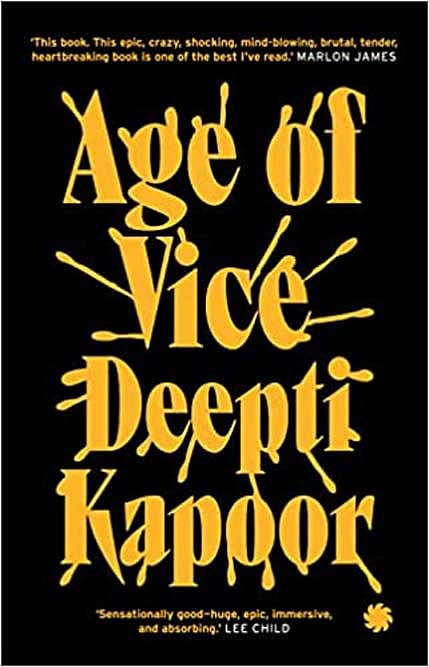The City of Loss

The title of Deepti Kapoor’s latest novel, Age of Vice, is a literal translation of Kali Yuga—also described as “the losing age”, elsewhere in the book, which is hurtling us all towards a state of apocalyptic dissolution. In terms of its ambition, the story is epic, running for over 500 pages, though its pulpy energy makes for quick reading.
At the heart of it all is Sunny Wadia, the debauched son of business tycoon Bunty Wadia, whose malpractices and political accomplices have made him staggering amounts of wealth. Sunny is the Prince of Delhi, the heir apparent to his father’s bounty and the sun at the center of his self-created solar system, around whom a host of characters revolves. Apart from the usual hangers-on, there is Neda Kapur, a crime reporter, who becomes his unlikely love interest, and Ajay, a low-caste man, rescued from oblivion by Sunny and given a fresh lease of life and power. Neda and Ajay, the two foundational pillars of Sunny’s world, predictably come to sorry ends because of the mess he spawns around him.
The tone of the story is set in the very first page, where a group of sleeping pavement dwellers is run over by a car. This trail of blood—punctuated with sex, drugs and alcohol—runs till the bitter end, where, in a Hamlet-like finale, the stage is left strewn with corpses. In between, the action moves from Manali to London to Goa, though the plot remains anchored in Delhi-NCR.
Readers familiar with Kapoor’s debut novel, A Bad Character, would know the pivotal role that the National Capital Region plays in her imagination. In both books, appearing nearly 10 years apart, Delhi is a microcosm for modern India and everything that ails it. In A Bad Character, Kapoor struggled at times with her experimental style to capture the essence of this murky world. But Age of Vice paints a similar landscape with broader strokes. There are coke-fueled parties galore, car chases, casual violence, everything you expect from a potboiler, and some more.
2026 New Year Issue
Essays by Shashi Tharoor, Sumana Roy, Ram Madhav, Swapan Dasgupta, Carlo Pizzati, Manjari Chaturvedi, TCA Raghavan, Vinita Dawra Nangia, Rami Niranjan Desai, Shylashri Shankar, Roderick Matthews, Suvir Saran
Age of Vice is driven by action, not so much by the inward-looking monologues that characterised A Bad Character. Although we get glimpses into Sunny’s childhood—his mother’s suicide and his uncle Vicky’s insidious hand behind it—there isn’t the same depth of attention to Neda’s history. Ajay, who has the makings of an arresting character, is forced to carry the burden of destiny that is assigned to him. He is the embodiment of caste injustice—his family destroyed by upper-caste thugs, he is sold into benign slavery as a boy. Even after he is redeemed by Sunny, Ajay cannot exact the revenge he wants, because his servile loyalties demand that he sacrifices his desires on the altar of his master’s greed. It is only during the time he spends in Tihar Jail that he reveals a vulnerability and craving for affection he cannot allow himself to express otherwise.
With Age of Vice, Kapoor has overcome the stylistic glitches that affected her first novel. Despite its meandering temporal and geographical shifts, the story is told with confidence and an assured sense of control, at times reminiscent of Vikram Chandra’s magisterial Sacred Games (2008). For Indian readers, though, Kapoor’s fictional terrain may seem too familiar, and a bit dated.
Fifteen years ago, Chandra’s achievement had felt fresh and urgent, not only because he held up a mirror to India, but also because he rewired our everyday realities. Those stories of murder and mayhem that get buried into a few square inches on newspapers assumed, in his expert telling, a vividness larger than life. Kapoor invokes the same template, almost down to the last detail (the long sequence in Tihar Jail, for instance) but, in spite of her impressive command as a storyteller, ends up being just a pale imitator of the genius of a writer like Chandra.

